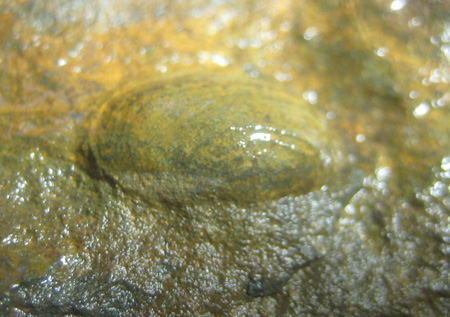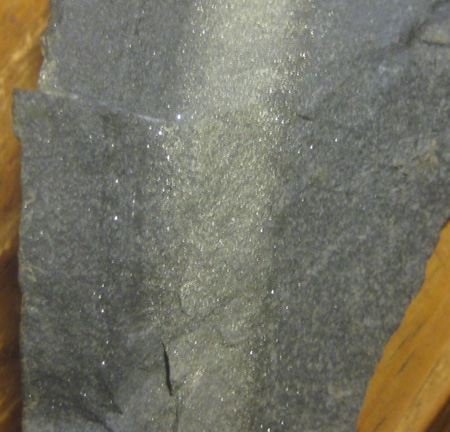|
|
|
mystery fossil and mineral
Monday, September 1 2014
Today down in the greenhouse basement, most of my jackhammering was aimed at the goal of clearing the remaining layer of hard bluestone off the softer layer I first reached a few days ago. The hard stuff continued to break off in loglike pieces, some of which were difficult to lift out of the hole. In some places it came up easily, though this was in part because of natural vertical cleavage planes in the rock. Along the north edge of the basement hole, there is no such cleavage plane, and I was forced to cut through the uncleaved rock as best I could. This went slowly and left the northern edge of the hole ragged.
As I dig my way further and further into the bedrock, I'm finding that the major cleavage planes, which had defined cabinet-sized blocks of rock, are petering out and disappearing. For example, a major vertical cleavage plane that had run through the middle of the floor from south to north (and inspired me to start excavating the bedrock to begin with) doesn't seem to extend below the layer of hard bluestone that I've recently been removing. That cleavage plane had seemed so substantial at the surface that I'd actually thought it was a fault with considerable displacement along it. It turns out that it's not a fault at all and that what I'd thought was vertical displacement was simply greater erosion of bedrock to its east than to its west.
As I extract it, I keep my eye out for fossils. There are very few, though occasionally I find one. Today I found a pea-sized shell with tiny ridges running along it like lines of latitude. Since all such shells always turn out to be brachiopods, I assume that it is one, though it doesn't look like the usual brachiopods I find. It's possible that at some point I'll dig down into rock from a more interesting period in biology, but I've seen rocks from a deeper swath of the geologic column scattered along the lower Chamomile, and none of it has many (or a diversity of) fossils. There's also the chance that I might stumble upon something interesting minerologically despite the homogeneity of the bluestone and shale. The closest that I came to that today was an interesting smear of unexpectedly light-colored (and large-grained) crystals along the side of an ordinary drab piece of dark grey bluestone. Perhaps this was recrystallized silica or feldspar (but not calcium carbonate; it didn't respond when exposed to sulfuric acid).

Today's greenhouse mystery fossil.

Today's greenhouse mystery mineral.
For linking purposes this article's URL is:
http://asecular.com/blog.php?140901 feedback
previous | next |

